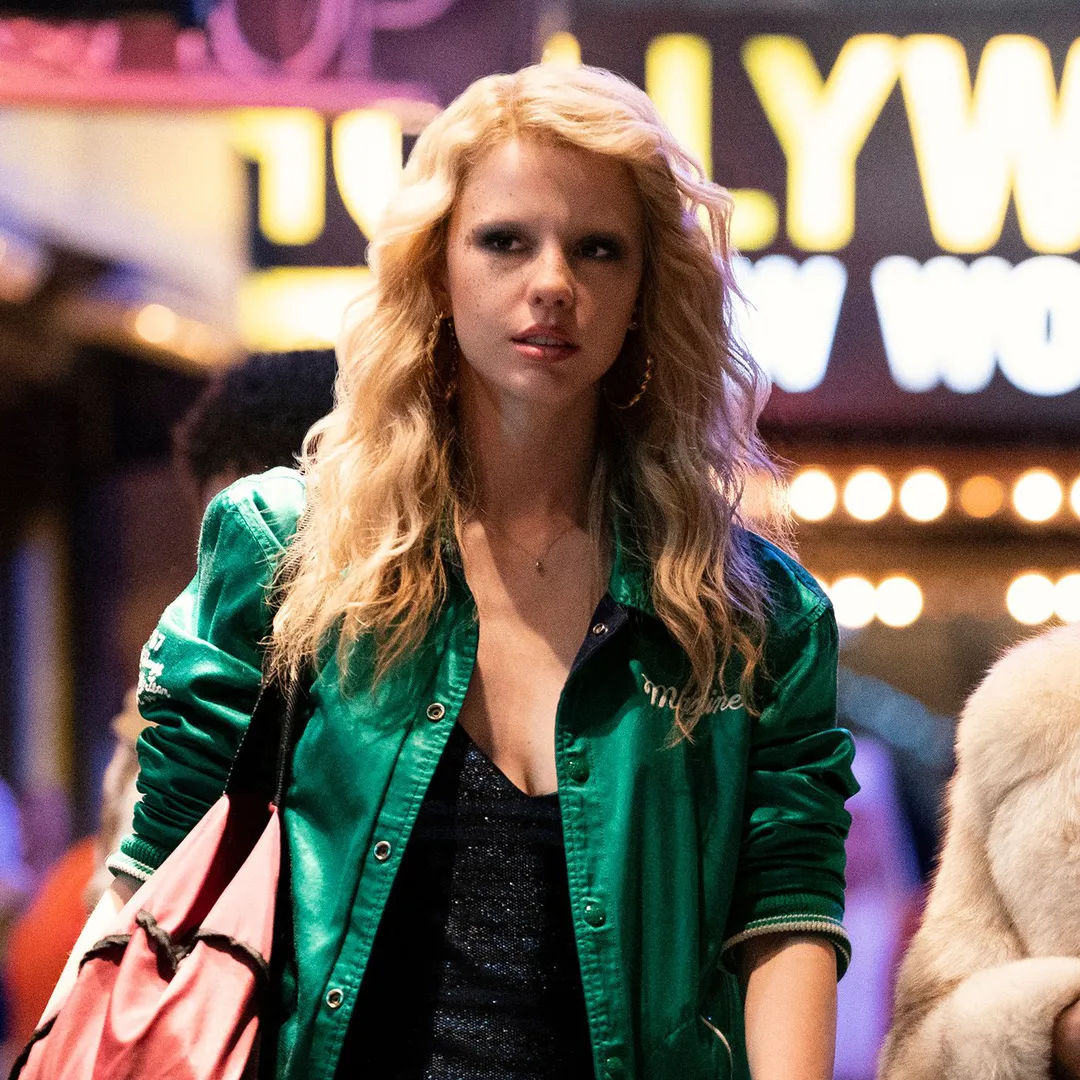
RED ONE (2024) directed by Jake Kasdan, stars Dwayne Johnson and Chris Evans, is an urban fantasy Christmas action-thriller, fitting neatly into no known genre, which will perhaps be enjoyable to anyone willing to grant the somewhat silly premise, and perhaps not to anyone unwilling.
This film enjoys a remarkably high audience score but a remarkably low score from the establishment film critics. This is usually a sign that the film is normal and enjoyable, not perverse nor woke.
But the film did not seem normal to me, by which I mean, I can think of no other urban fantasy Christmas action-thriller. As such, this film runs the risk of falling between the stools. Action film fans might well pan it for its fantastical elements, whereas fans of Christmas family films might well pan it for its untraditional, even disrespectful, handling of common elements of the Santa Claus fairy tale.
As for Christians, we have long ago ceased to expect any mention of Christ or Christmas in a Christmas movie, aside from Linus quoting scripture in a Charlie Brown telly special from two generations ago.
Regardless, this filmgoer found the film perfectly enjoyable: nor were any elements visible which might provoke the establishment film critics. I cannot explain the high audience score nor the low critic score.


In the film, Dwayne “The Rock” Johnson plays Callum Drift, a hardboiled six-foot-five elf serving a remarkably trim and athletic Santa as his chief of North Pole security.
Drift wishes to retire, as the Naughty List grows ever longer, and his faith in mankind fails. However, even as he is preparing his resignation letter, he sees Santa’s workshop assaulted by a black ops team of kidnappers. Draft gives chase, but the evildoers elude him.


Santa’s workshop is hidden beneath a holographic forcefield, but the secret international body charged with keeping the peace between the various mythical entities, the M.O.R.A (Mythological Oversight and Restoration Authority) soon discovers a hacker who broke into their security and betrayed them: gambling lowlife and deadbeat dad Jack O’Malley, played with evident zest by Chris Evans.


We are treated to a scene of O’Malley picking up his juvenile-delinquent son after school, where the boy got detention for monkeying with the school computer records: the father thereupon gives him a stern talking-to, that is, by cautioning him to cover his tracks better, and trust no confederates.


This is after we see O’Malley stealing candy from a baby, just so the audience harbors no doubt that this is not Captain America.
In short order O’Malley is mugged by MORA agents and brought in for questioning: not knowing who hired him, O’Malley nonetheless planted spyware on his paymaster, hence knows his location, but nothing else. The O’Malley and Drift are forced to team up against the better judgment of both: shenanigans ensue.


The pair must battle evil snowmen, sneak into a monster-infested castle, and confront an eerie player-piano playing the Nutcracker suite perched in the middle of an empty, fog-bound highway in Germany.


In one particularly well-done scene, O’Malley and his juvenile-delinquent son are miniaturized and trapped in snow-globes meant to imprison the unrepentant. When he sees his son terrified, O’Malley’s fatherly instincts come to the fore: he confesses his mistakes, he asks forgiveness, and he vows to amend his ways. Any mainstream critic not familiar with threefold steps of traditional Christian confession might not grasp the significance.


ikewise, anyone unfamiliar with the less well known nooks and crannies of Old World Christmas lore might not recognize the figures chosen to be the heavies here: Gryla is an Icelandic ogress who eats naughty children at Christmas time, while Krampus, from Romania, is goat-horned fork-tongued helper to Saint Nicholas, who punishes naughty children by birching them with a rod, or stuffing them in to a bag for abduction or drowning.


No version of these tales ever took root in America Christmas tradition — being rather alien to the American spirit — albeit within the last ten years, as our spirit is being lost, among the anti-Christmas crowd and low-grade horror directors Krampus has gained popularity. The version of Krampus is this film is rather charming in his own dark way, which may have the unfortunate side-effect the augmenting the popularity of the anti-Christmas or low-grade horror film versions.


All three characters, Drift, O’Malley, and even Krampus have uncomplex but satisfying character arcs: Drift regains his faith in humanity after O’Malley turns over a new leaf. This character growth, as stated, is uncomplex, as befits an action movie, but satisfying, as befits a Christmas movie.
And the rule of fairy-tale was strictly followed, which is, namely, that when you are told to touch nothing, and you touch something, disaster ensues.
The tale is set in our modern world, but with certain enclaves of the mythological world scattered here and there, hidden behind mist and illusion. This conceit of a hidden world within our own is familiar and beloved trope of the genre.
The special effects deceived my eye: to me they looks smooth and seamless. And the props and settings and art direction in general seemed a blend of gothic and cyberpunk Victoriana, as befits a high-tech version of Christmasland.
The fantastical elements of the movie are well handled, by which I mean the abilities, and also the limitations, of every magical power or magical tool is briefly but succinctly made clear: the audience should be no more bewildered than Jack O’Malley. Anything not explained in dialog was clear enough in how it was used. Of note was the “reality adjustment” wristband used by Drift, which allowed him to turn rock’em-sock’em robots or matchbox cars real.
There was also a clever bit of by-play which allowed the befuddled characters to recognize each other despite being bedeviled by shapechangers.
The theme of the piece is appropriately straightforward: no rogue is beyond redemption, nor any cynic either. This is as befits as thoroughly secular version of an urban fantasy Christmas action thriller comedy, I suppose.


As part of the conceit of the film, just as jolly fat Santa is here fit and hardboiled military type (the marine version of Saint Nick, as it were) so too is his miniature sleigh and eight tiny reindeer here replaced by a high-tech flying behemoth pulled by monstrous deer-titans.


I have no complaint about this film in part because I was expecting it to be terrible, when, in fact, it was enjoyable good clean fun. Nothing lewd, crude or shocking was involved.
Still, it was a good, clean, fun movie, starring charming actors and actresses, with thrilling action scenes, funny comedic bits, great deadpan acting from Dwayne Johnson — who, let it be known — just plays Dwayne Johnson being himself, and wry snark from Chris Evans.
Christmas Specials involve the birth of Christ, and Xmas Specials involve Santa Claus. Here, Santa is called “Saint Nicholas of Myra” once in one line — which is the closest this otherwise entirely secular-Xmas film comes to acknowledging the meaning of Christmas.


You can watch Red One now on Amazon Prime Video here.
Originally published here.














































/cdn.vox-cdn.com/uploads/chorus_asset/file/25789444/1258459915.jpg)

/cdn.vox-cdn.com/uploads/chorus_asset/file/25546252/STK169_Mark_Zuckerburg_CVIRGINIA_D.jpg)

/cdn.vox-cdn.com/uploads/chorus_asset/file/23951353/STK043_VRG_Illo_N_Barclay_3_Meta.jpg)
/cdn.vox-cdn.com/uploads/chorus_asset/file/24924653/236780_Google_AntiTrust_Trial_Custom_Art_CVirginia__0003_1.png)